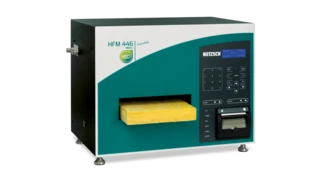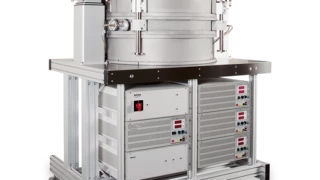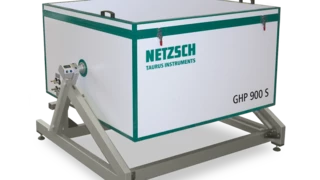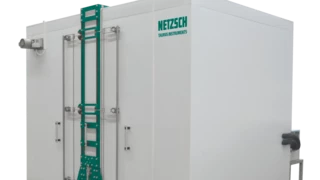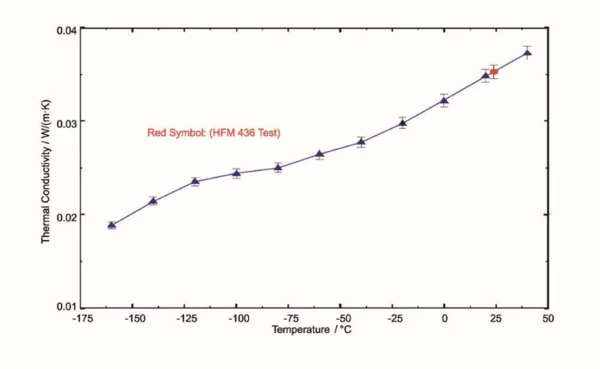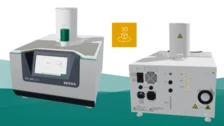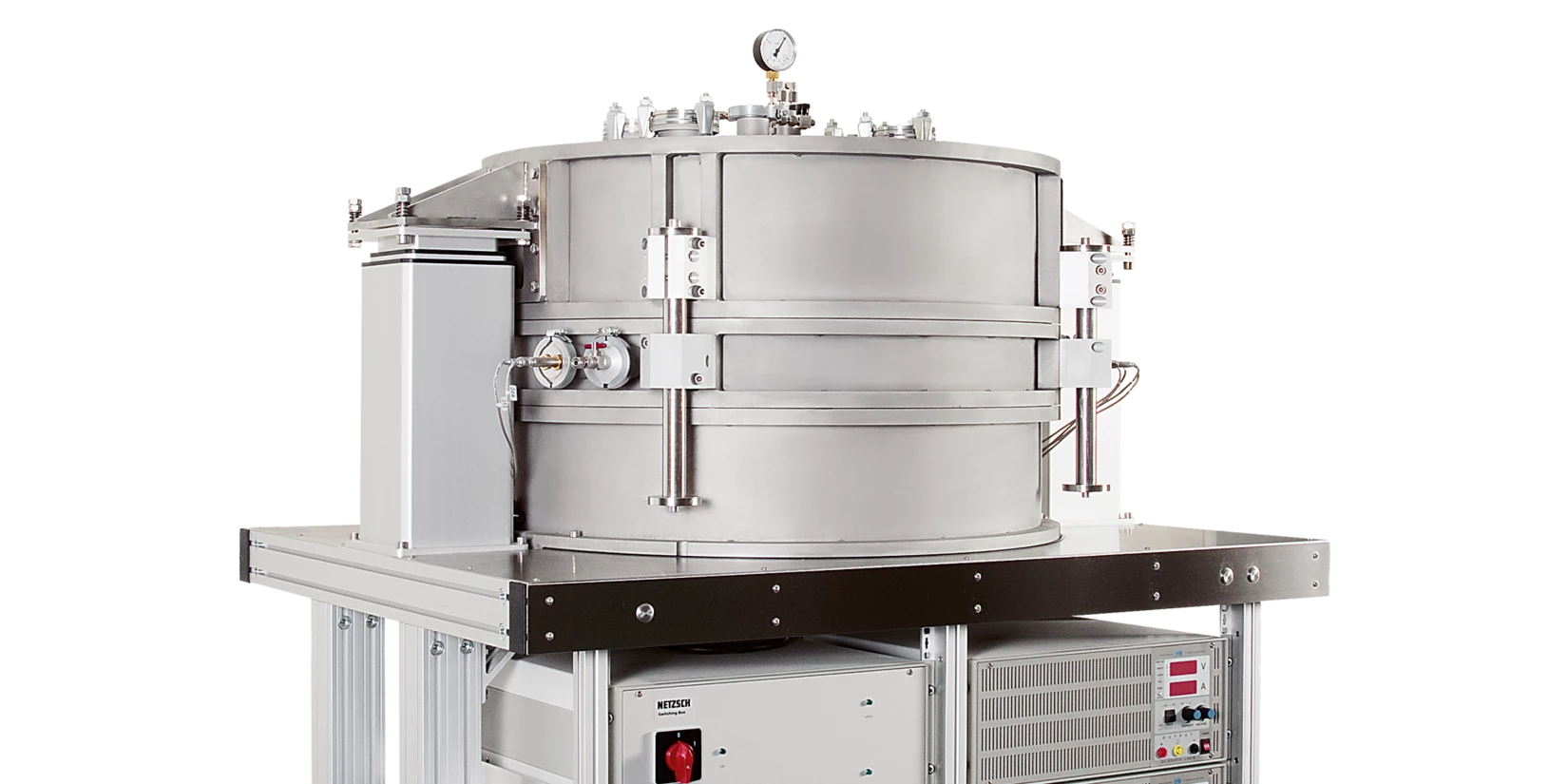
HFM / GHP / tlr / TDW / GHFM
熱伝導率
熱伝導率と熱拡散率は、材料や部品の熱輸送特性を説明する上で最も重要な熱物性材料パラメータです。
絶対測定法に基づく保護熱板法熱伝導率測定装置GHP 456 Titan®は、断熱材の熱伝導率の測定に理想的な装置です。
もう一つの熱伝導率測定手法としては、熱流計法熱伝導率測定装置ヒートフローメーター(HFM)を用いて測定されます。
NETZSCH社のHFM、GHPは下記工業規格に準拠しています。(e.g. ASTM C518, ISO 8301, DIN EN 12667 EN 12, JIS A 1412, based on DIN EN 12664) and for GHP (ISO 8302, ASTM C177, DIN EN 12939, DIN EN 12667, DIN EN 13163).
熱伝導率と熱拡散率は、材料や部品の熱輸送特性を説明する上で最も重要な熱物理学的材料パラメータです。通常、熱伝導率は熱流計法ヒートフローメーター(HFM)や保護熱板法ガーディドホットプレート(GHP)により測定されます。
method HFM
Heat Flow Meter (HFM)
based on ASTM C518, ASTM C1784, ISO 8301, JIS A1412, DIN EN 12664, and DIN EN 12667
In a heat flow meter (HFM), the test specimen is placed between two heated plates controlled to a user-defined mean sample temperature and temperature drop to measure heat flowing through the specimen. The sample thickness (L) corresponds to the actual sample dimension or to match the desired thickness of a compressible sample. The heat flow (Q) through the sample is measured by two calibrated heat flux transducers covering a large area of both sides of the specimen.
After reaching a thermal equilibrium, the test is done. The heat flux transducer output is calibrated with a standard. For the calculation of the Thermal ConductivityThermal conductivity (λ with the unit W/(m•K)) describes the transport of energy – in the form of heat – through a body of mass as the result of a temperature gradient (see fig. 1). According to the second law of thermodynamics, heat always flows in the direction of the lower temperature.thermal conductivity (λ) the average heat flux and the thermal resistance R is used, in accordance with Fourier’s Law (see formulas on the right). The thermal transmittance, also known as U-value, is the reciprocal of the total thermal resistance. The lower the U-value, the better the insulating ability.
method: GHP
Guarded Hot Plate (GHP)
based on well‐known, standardized guarded hot plate techniques, e.g., ISO 8302, ASTM C177 or DIN EN 12667
The Guarded Hot Plate instrument measures the Thermal ConductivityThermal conductivity (λ with the unit W/(m•K)) describes the transport of energy – in the form of heat – through a body of mass as the result of a temperature gradient (see fig. 1). According to the second law of thermodynamics, heat always flows in the direction of the lower temperature.thermal conductivity of insulation products.
The GHP principle is based on an absolute measurement method and therefore requires no calibration standards. It offers optimum accuracy in the available temperature range.
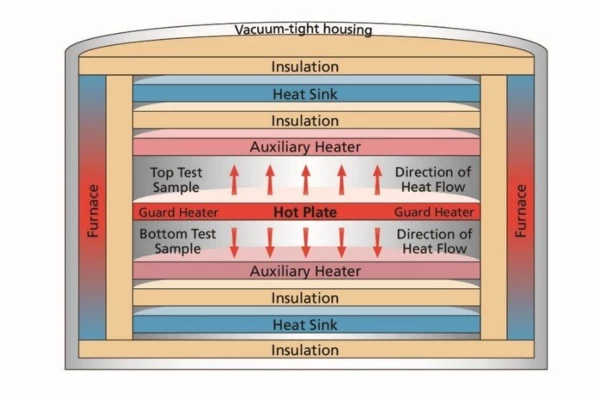
The hot plate and the guard ring are sandwiched between two specimens of the same material and approximately the same thickness (Δx). Typically, two specimens are preferred for a measurement, but it is also possible to work with only one test specimen.
Auxiliary heaters (cold plates) are placed above and below the samples. The cold plates are heated such that a precisely defined, user-selectable temperature difference (ΔT) is established between the hot and the cold plates and thus also over the entire sample thickness.
As soon as thermal equilibrium is reached, the power input in the hot plate with area A is measured.
The Absolute GHP Method
The great advantage of the GHP method is that it is an absolute method; i.e., no calibration or correction is required at all. The Thermal ConductivityThermal conductivity (λ with the unit W/(m•K)) describes the transport of energy – in the form of heat – through a body of mass as the result of a temperature gradient (see fig. 1). According to the second law of thermodynamics, heat always flows in the direction of the lower temperature.thermal conductivity values result in the stationary state simply from the:
- precisely measured total power input into the hot plate, Q,
- average sample thickness, d,
- measurement area, A, and
- mean temperature difference, ΔT, along the sample or the two samples, as the case may be (the factor 2 results for two samples):
The GHP method is described in, e.g., ISO 8302, ASTM C177 or DIN EN 12667. NETZSCH offers the GHP 456 Titan®®.

応用文献

MEASUREMENT WANTED?
Our NETZSCH applications laboratory is providing contract testing services for a wide range of industries and research centers. It is equipped with state-of-the-art testing instruments allowing for a variety of thermal analysis measurements to be carried out.
Consult with the experts in our applications labs to choose the best-suited measuring method for your specific needs.

